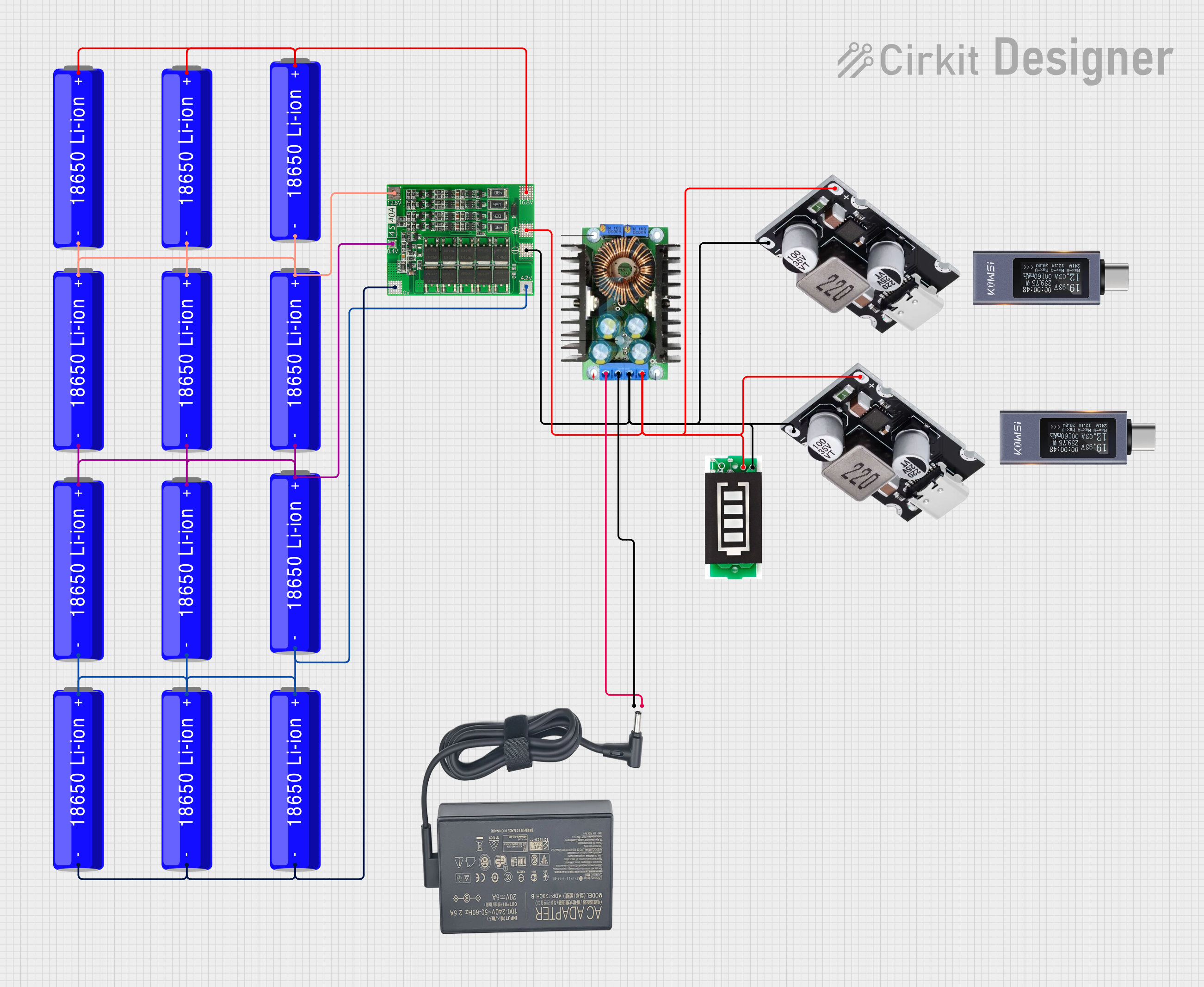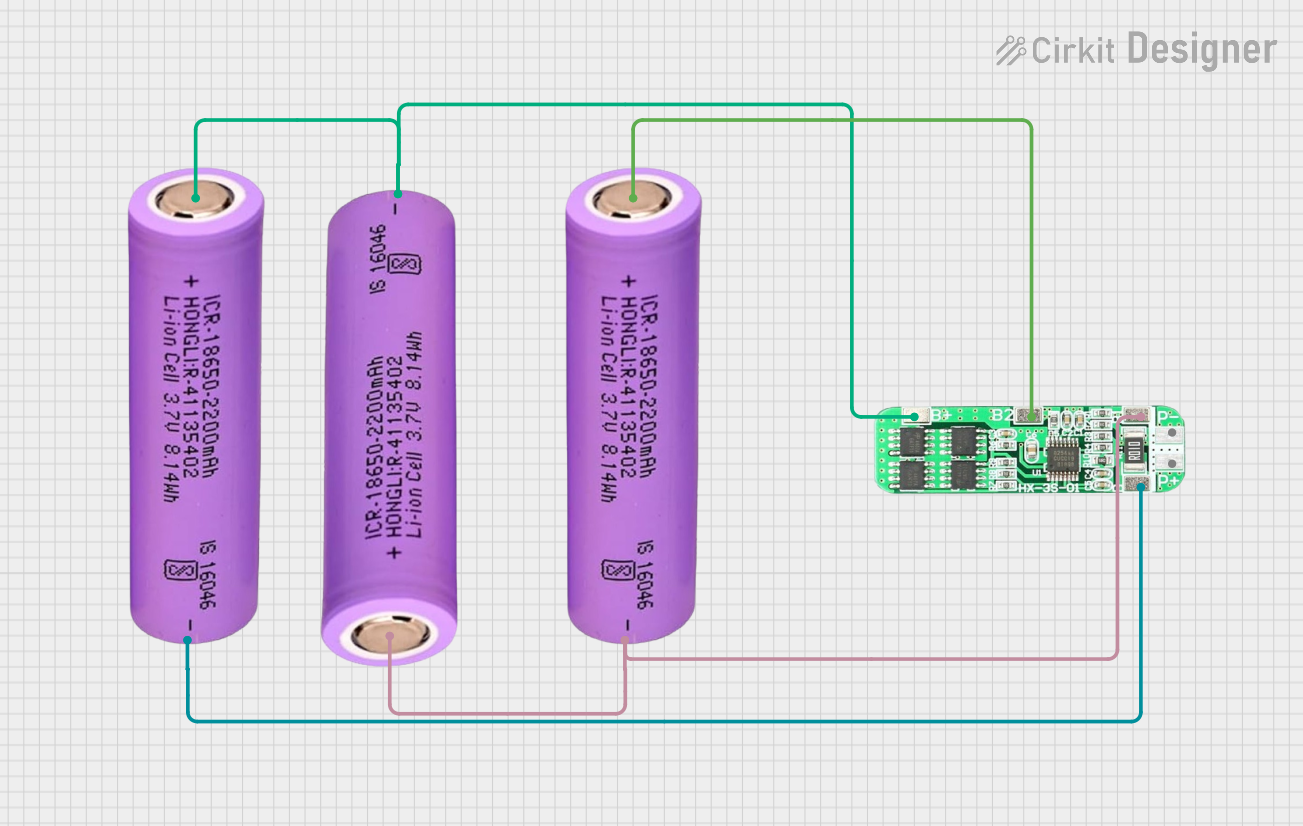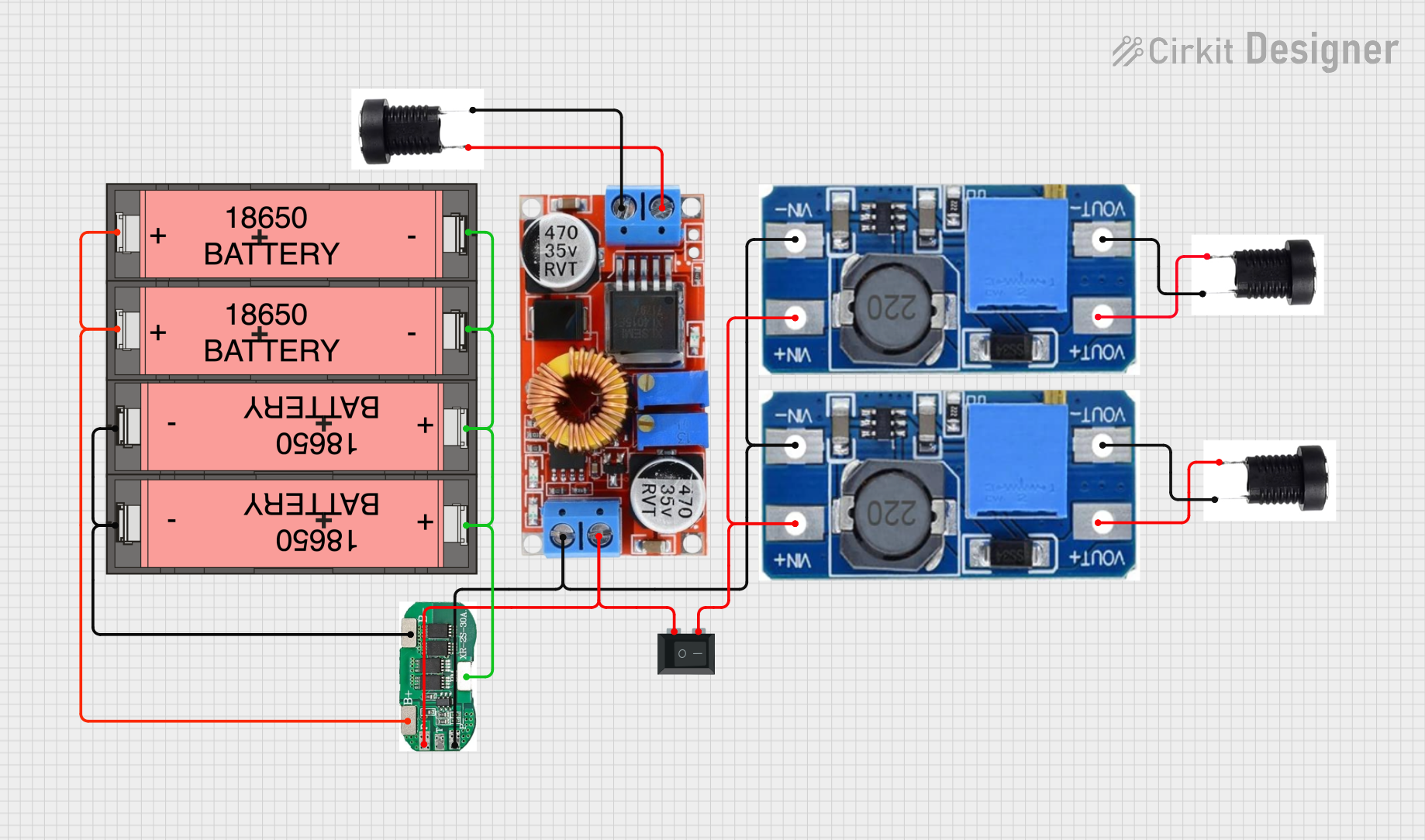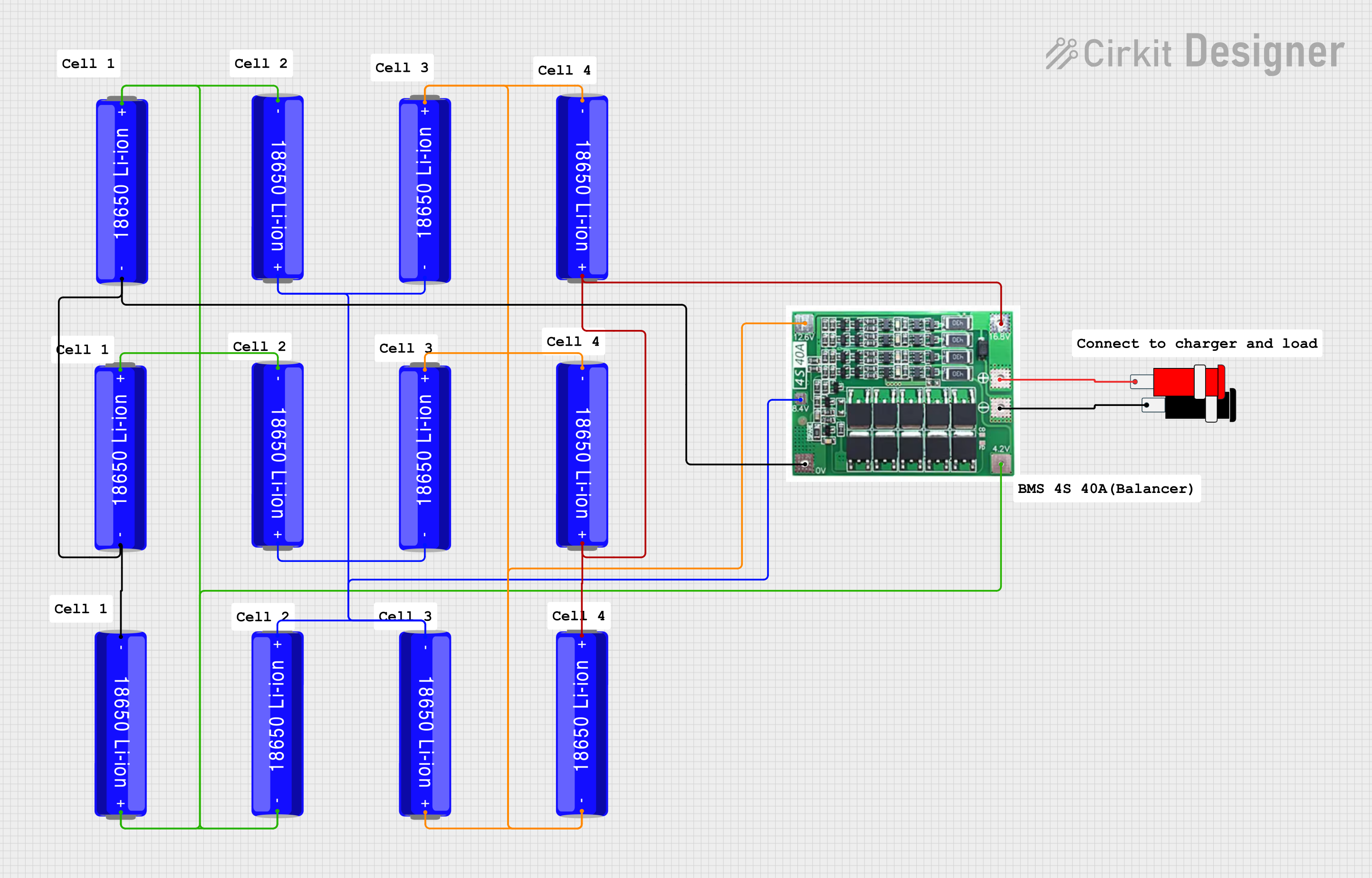
How to Use Li-ion 18650 Battery: Examples, Pinouts, and Specs

 Design with Li-ion 18650 Battery in Cirkit Designer
Design with Li-ion 18650 Battery in Cirkit DesignerIntroduction
The Li-ion 18650 battery is a cylindrical rechargeable battery that has become a standard in powering a wide range of electronic devices. With a nominal voltage of 3.7 volts and varying capacities, these batteries are prized for their energy density and long life. They are commonly used in portable electronics, power tools, and electric vehicles, as well as in DIY projects and with hobbyist platforms like the Arduino.
Explore Projects Built with Li-ion 18650 Battery

 Open Project in Cirkit Designer
Open Project in Cirkit Designer
 Open Project in Cirkit Designer
Open Project in Cirkit Designer
 Open Project in Cirkit Designer
Open Project in Cirkit Designer
 Open Project in Cirkit Designer
Open Project in Cirkit DesignerExplore Projects Built with Li-ion 18650 Battery

 Open Project in Cirkit Designer
Open Project in Cirkit Designer
 Open Project in Cirkit Designer
Open Project in Cirkit Designer
 Open Project in Cirkit Designer
Open Project in Cirkit Designer
 Open Project in Cirkit Designer
Open Project in Cirkit DesignerTechnical Specifications
General Characteristics
- Nominal Voltage: 3.7V
- Typical Capacity: 1800mAh to 3500mAh (varies by manufacturer)
- Max Charging Voltage: 4.2V
- Discharge Cut-off Voltage: 2.5V to 3.0V
- Max Continuous Discharge Current: Varies by manufacturer and model
- Chemistry: Lithium-ion
- Diameter: 18mm
- Length: 65mm
- Weight: Approximately 45g
Pin Configuration and Descriptions
Since the 18650 battery is a cylindrical cell, it does not have a traditional "pin" configuration. Instead, it has two terminals:
| Terminal | Description |
|---|---|
| Positive (+) | The raised terminal on the top of the battery |
| Negative (-) | The flat terminal on the bottom of the battery |
Usage Instructions
Integrating with a Circuit
- Battery Holder: Use a battery holder specifically designed for 18650 cells to ensure proper contact with the terminals.
- Polarity: Always connect the positive terminal to the positive side of your circuit and the negative terminal to the ground.
- Protection Circuit: It is highly recommended to use a protection circuit to prevent overcharging, deep discharging, and short-circuiting.
- Charging: Use a dedicated charger for Li-ion batteries that can provide the correct charging voltage (4.2V) and current.
Best Practices
- Do not overcharge or over-discharge the battery beyond its specified limits.
- Avoid exposing the battery to high temperatures or direct sunlight.
- Store the batteries in a cool, dry place when not in use.
- Do not attempt to disassemble or modify the battery.
- Use a battery management system (BMS) for projects involving multiple 18650 cells in series or parallel.
Troubleshooting and FAQs
Q: Why won't my 18650 battery charge? A: Ensure that the charger is functioning and compatible with Li-ion batteries. Check the battery's voltage; if it's below the discharge cut-off, the protection circuit may have been triggered.
Q: Can I use a different type of battery charger? A: No, you should always use a charger designed for Li-ion batteries to prevent damage.
Q: What should I do if my battery is overheating? A: Stop using the battery immediately. Overheating can be a sign of internal damage or short-circuiting. Allow it to cool down in a safe area away from flammable materials.
Q: How can I safely dispose of 18650 batteries? A: Do not throw them in the trash. Take them to a battery recycling center or a designated disposal facility.
Example Arduino Connection
The following is an example of how to connect an 18650 battery to an Arduino UNO for a simple LED project:
// Define the LED pin
const int LED_PIN = 13;
void setup() {
// Set the LED pin as an output
pinMode(LED_PIN, OUTPUT);
}
void loop() {
// Turn the LED on for one second
digitalWrite(LED_PIN, HIGH);
delay(1000);
// Turn the LED off for one second
digitalWrite(LED_PIN, LOW);
delay(1000);
}
Note: When powering an Arduino with an 18650 battery, a voltage regulator or a step-up/step-down converter may be required to ensure the voltage is within the acceptable range for the Arduino board (typically 5V for the Arduino UNO).
Safety Reminder: Always incorporate a protection circuit when connecting a Li-ion battery to any electronic device to prevent potential hazards.